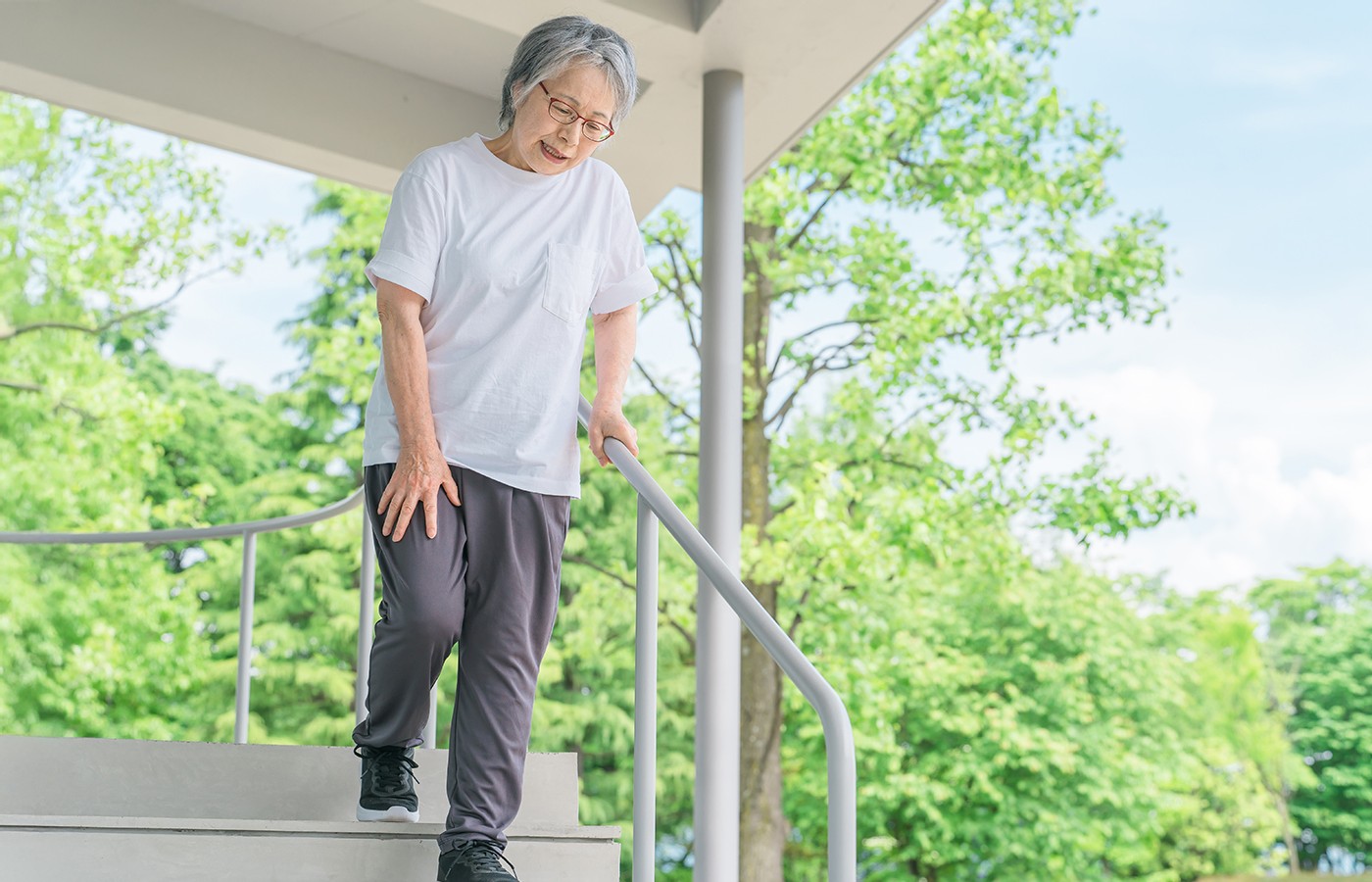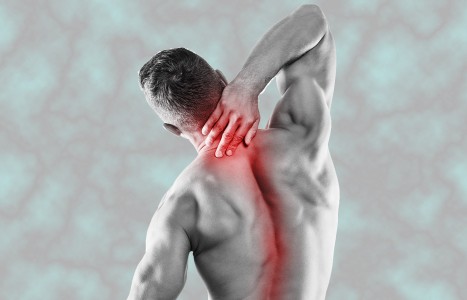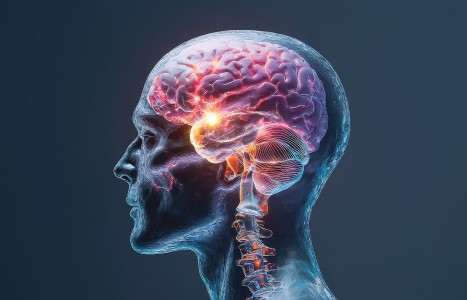MRI is currently the gold standard for identifying radicular pathology, but unfortunately, it requires preauthorization, which isn’t easy to obtain. Physical tests are what most practitioners depend on – despite the marginal reliability of the tests. The information in this article brings history and observation to the forefront of radicular diagnostics. Each factor listed can significantly increase the clinician’s ability to diagnose radiculopathies.
Sarcopenia: Diagnosis and Management - Are We Missing an Opportunity?
Sarcopenia is a progressive and generalized loss of skeletal muscle mass and function that leads to a decline in physical performance. Diagnosis of sarcopenia is based on the definition from the 2010 European Working Group on Sarcopenia in Older People (EWGSOP).1 It determined there were three diagnostic criteria for sarcopenia based on muscle mass, muscle strength, and physical performance.
Low muscle mass (LMM) is defined by a SMM index of less than 8.90 kg/m2, low muscle strength (LMS) by hand-grip strength below 30 kg in men and 20 kg in women, and low physical performance (LPP) by gait speeds of less than 0.8 m/s.2 Sarcopenia diagnosis confirmation requires the presence of LMM and LMS or LPP.
Sarcopenia is classified in three categories: pre-sarcopenia, sarcopenia, and severe sarcopenia based on the presence of LMM and the presence or absence of functional impairment. In 2018, the EWGSOP met to update the original definition of sarcopenia: New scientific and clinical insights were introduced to emphasize the importance of muscle strength loss as a prime indicator of probable sarcopenia.3 Diagnosis is confirmed when there is also low muscle mass and considered severe when low physical performance is present.
Several pathological conditions can lead to sarcopenia even in younger people. However primary sarcopenia is due to aging alone. Secondary sarcopenia can be associated with malnutrition, inactivity, drugs and certain medical treatments and severe chronic diseases such as cancer, heart failure, kidney disease and obstructive pulmonary disease.
Our goal as practitioners should be early detection and intervention with appropriate treatment. Even though this condition commonly affects the elderly and is thought to be part of the normal aging process, it can be treated, and the progression of the disease can be slowed and reversed in the early stages. Since sarcopenia affects the musculoskeletal system, it is a major factor in increased frailty, falls and fractures; leading to hospitalizations and surgeries, which increase the risk of complications that impact quality of life.
As chiropractors are on the forefront of treating musculoskeletal conditions, we are therefore best positioned for managing age-related sarcopenia. It is an opportunity missed if we are not diagnosing and managing this condition.
I venture to guess some of us are treating the condition, but not documenting the diagnosis and management – even though there is an ICD-10 code for sarcopenia.4 What percentage of our patients are over age 60? How many of them are being treated for musculoskeletal problems, acute or chronic, that may also be associated sarcopenia?
To date, the only established treatment for sarcopenia is resistance exercise. Apparently, there are no nonresponders to resistance-type exercise training in the older population.5 We all need to get off the couch!
The criteria for diagnosing sarcopenia were developed by the EWGSOP. They recommended using a screening tool such as SARC-F6 to determine the possibility of sarcopenia, with further physical tests performed if the SARC-F score is 4 or more. The SARC-F is a simple questionnaire which asks the patient about Strength, Assistance with walking, Rising from a chair, and Climbing stairs.
Common Physical Tests for Sarcopenia
- Handgrip test: Simple way to identify shortages in overall muscle strength; of course, arthritic changes in the hands can skew this assessment. https://www.whyiexercise.com/grip-strength.html
- Chair stand test: Chair stand test measures leg strength, especially the quadriceps. https://www.cdc.gov/steadi/media/pdfs/STEADI-Assessment-30Sec-508.pdf
- Walking speed test: The walking (gait) speed test measures the time it takes to travel 4 meters (about 13 feet) at the usual walking pace. https://emcbiostatistics.shinyapps.io/GaitSpeedReferenceValues/
- Short physical performance battery (SPPB): With the SPPB test, chair stand test, standing balance test and walking speed test. https://geriatrictoolkit.missouri.edu/SPPB-Score-Tool.pdf
- TUG test: The TUG test measures the time it takes to rise from a chair, walk 3 meters (about 10 feet) away from the chair, walk 3 meters back to the chair, and sit back down in the chair. https://www.sralab.org/sites/default/files/2017-06/Timed%20Up%20and%20Go%20Test%20Instructions.pdf
I am not suggesting one perform all these tests on their patient, but at least 2-3 to determine strength and function. These tests can also be used to follow progress once the patient has started a resistance exercise program.
Evaluating Muscle Mass
Where available, a DXA scan is recommended to evaluate muscle mass. If DXA is not available or too expensive, a bioelectrical impedance analysis (BIA) can be done.7 In the past, anthropometry (skinfold thickness relative to body circumference) was used because it was cheap and easy to perform This method is not particularly reliable in older adults due to laxity of skin and in overweight patients. In general, a DXA is the preferred method to date for assessing muscle mass and bone density.
There are, however, other imaging modalities, such as CT and MRI, which are very precise and can separate fat from other soft tissues of the body, which makes these methods gold standards for estimating muscle mass in research. But in a clinical setting, the high cost, limited access and concerns about radiation exposure limit the use of these modalities for routine clinical practice.
Imaging for Sarcopenia
- Dual-energy X-ray absorptiometry (DEXA or DXA): This type of imaging test uses low-energy X-rays to measure estimate muscle mass, fat mass and bone density. It is the most-used imaging technique for body composition estimation, allowing the measurement of lean mass (LM), fat mass (FM), and bone mineral content (BMC) simultaneously. LM measurement is an estimation of all non-fat/non-bone tissues. There are weak points with this modality; different results vary with densitometer brands, findings are dependent on hydration status, there is some radiation exposure and data are only bidimensional.
- CT: This imaging modality is used more and more in research trials as a routine diagnostic tool for the assessment of muscle quantity and quality, assuming that muscle density reduction is related to the degree of fat infiltration. This imaging technique has the advantage in that the data needed for the assessment of sarcopenia can be obtained from a study that was performed for the diagnosis of some other pathology. Take for example in an abdominal study the slices performed at L3 or L4 levels, includes the
- paraspinous, psoas, abdominal muscles on the same slice. On the same CT slice, it is also possible to calculate information regarding the visceral adipose tissue and subcutaneous tissues obtaining a CT body composition.
- MRI: This imaging modality enables the assessment of muscle composition by using several semi-quantitative or quantitative sequences without the need for ionizing radiation. MRI can be used to measure the cross-sectional area of skeletal muscles, advanced MRI sequences are able to be combined to estimate body composition and evaluate muscle quality abnormalities, such as muscle disruption, edema, fat infiltration (myosteatosis) or fibrosis (myofibrosis).8 Research is being done using different sequences to assess sarcopenia and other muscle degenerative diseases which are beyond the scope of this article and beyond my expertise.
- US: This modality is a portable, inexpensive, non-invasive technique without ionizing radiation widely used to investigate musculoskeletal conditions. It can be used in the assessment of muscle quality and quantity. It is an accurate technique for the estimation of muscle properties showing strong positive correlation with DEXA, CT, and MRI-based measurements. The main disadvantage of this technique is that it is dependent on the examiner’s technical skills, reproducibility and there are no validated cut-off values for sarcopenia. Ultrasound might be an important addition to the diagnostic toolbox, allowing quick and early diagnosis of sarcopenia and facilitating appropriate dietary and exercise interventions.
- In the U.S. and Europe, the prevalence of sarcopenia varies from 5% to 13% in people ages 60 and older. The estimates increase to 11% to 50% for people ages 80 and older. The disease affects both sexes equally.
There is a gradual loss in muscle mass and strength beginning in the third or fourth decades. This process picks up between the ages of 65 and 80. Rates vary but can be as much as 8% of muscle mass with each decade.9 Everyone loses muscle mass over time, but people with sarcopenia lose it more quickly.
The goal should be to slow this process as much as possible to maintain a better quality of life as one ages. As “portal of entry” health care providers, chiropractors are uniquely positioned to employ screening tools that aid in identifying sarcopenia so negative health outcomes can be mitigated.10 Let’s not overlook sarcopenia.
References
- Jentoft AJ, et al. Sarcopenia: European consensus on definition and diagnosis: report of the European Working Group on Sarcopenia in Older People. Age Ageing, 2010 Jul;39(4):412-23.
- Walowski CO, et al. Reference values for skeletal muscle mass - current concepts and methodological considerations. Nutrients, 2020 Mar 12;12(3):755.
- Cruz-Jentoft AJ, et al. Sarcopenia: revised European consensus on definition and diagnosis. Age Ageing, 2019 Jan 1;48(1):16-31.
- Anker SD, et al. Welcome to the ICD-10 code for sarcopenia. J Cachexia Sarcopenia Muscle, 2016 Dec;7(5):512-514.
- Churchward-Venne TA, et al. There are no nonresponders to resistance-type exercise training in older men and women. J Am Med Dir Assoc, 2015 May 1;16(5):400-11.
- Screening tool for sarcopenia: SARC-F. https://www.cosa.org.au/media/zhgoka0k/sarc-f.pdf
- Janssen I, et al. Estimation of skeletal muscle mass by bioelectrical impedance analysis. J Appl Physiol, 2000;89:465-71.
- Wang L, et al. Fat infiltration in skeletal muscle: Influential triggers and regulatory mechanism. iScience, 2024 Mar;27(3): 109221.
- Tagliafico AS, et al. Sarcopenia: how to measure, when and why. Radiol Med, 2022 Mar;127(3):228-237.
- Miller J. Sarcopenia: a review of the validity and usefulness of five commonly employed screening tests for early detection in clinical practice. JCC, 2021;4(1):72-78.



